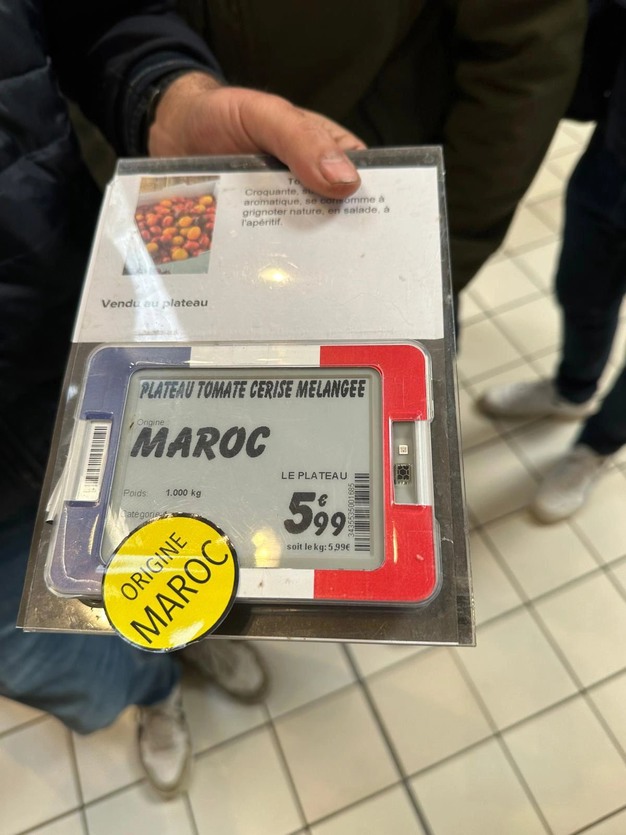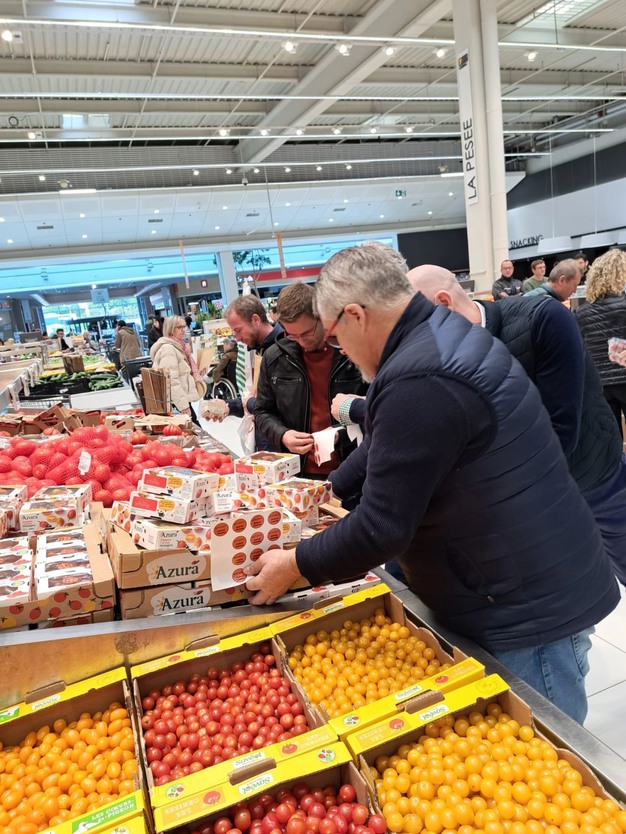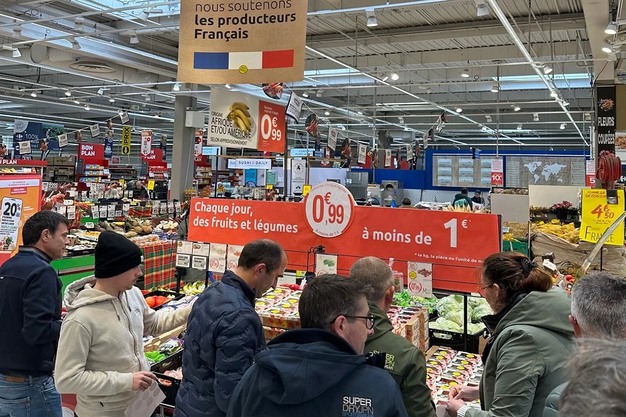French tomato growers of Légumes de France have launched a new operation. On April 26th, a series of actions took place in several supermarkets in France to label Moroccan tomatoes. The objective is to denounce the massive imports of Moroccan cherry tomatoes during the French production period, to highlight the customs barriers that do not exist under the EU/Morocco agricultural agreement, and to raise awareness of the illegible display of origin on the shelves."

Massive imports all year round
"From 2014 to 2023, the volume of Moroccan tomatoes imported into the EU rose from 345,000 tons to almost 492,000 tons, an increase of over 40%. Morocco historically produces round tomatoes, but it has now specialized in cherry tomatoes being produced all year round and mainly destined for export. In 2023, there was a drop in the volumes of Moroccan tomatoes exported to Europe, but it is not the case for cherry tomatoes, which continue to grow and remain on French supermarket shelves at the height of the French production period (April to October). French cherry tomato production is currently large enough to meet consumer demand, but it is hampered by the deliberate decision of supermarket chains to offer Moroccan rather than French tomatoes," according to Tomatoes et Cucumbers of France.
Labor costs that are "impossible to compete with"
Moroccan producers have a major competitive advantage. Their labor costs are much lower than those of French producers, making them virtually impossible to compete with. "The gross hourly wage charged to the employer is €0.98/hour [1.05 USD/hour] in Morocco, compared with €13.77/hour [14.74 USD/hour] in France."

"Virtually no customs barriers"
"Under the EU/Morocco agreement (2012), Moroccan exports are subject to: a zero-duty tariff quota of 285,000 tons distributed monthly from October 1st to May 31st, instead of 185,000 tons per year allowed under the previous agreement; an ad valorem tariff reduction of 60% from June to September without limitation; a conventional entry price of 0.461 euros/kg [0.49 USD/kg] from October 1st to May 31st, an entry price dating from 2000 and not even indexed to inflation." Since 2014, the method for calculating the entry price has been based on the flat-rate import value (FIV). This method does not take into account the varietal evolution of Moroccan tomato imports and the now very large supply of cherry tomatoes, which are a high value-added product. The method used to calculate the FIV, the absence of any revision of the conventional entry price, and the reductions or absence of customs duties on large volumes, mean that there are almost no customs barriers between Morocco and Europe, or any protection for the European market, despite the existence of a 'safeguard' clause in the EU-Morocco free-trade agreement. It is therefore high time to revise the EU-Morocco agreements in order to reduce competition for French producers during their production period (April-October)."

More visible labeling
French tomato producers are asking French supermarkets "to offer only French tomatoes when these are available." This awareness-raising campaign is also aimed at the French and European public authorities, as producers reiterate their request for more visible labeling for French consumers, with "the flag of the producing country (15 mm minimum), and the written indication of origin near the flag and at the font size specified in the current Consumer Information regulation. The product's origin should be affixed to the upper side of the product packaging (most visible on the shelf). The indication of the place and country of packaging should be written in a font size smaller than that of the country of origin. Finally, the origin of fruit and vegetables should be indicated in mass catering (as part of the draft law on agricultural sovereignty and the renewal of generations in agriculture)."
For more information:
AOPn Tomates et concombres de France
tomates-de-france.com
[email protected]
